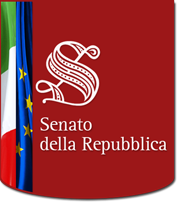The "Giovanni Spadolini" Library
The Library is open to members of the public on weekdays all year round, except for the month of August and certain public holidays; the opening hours are 9.00 - 19.30 (Mondays to Fridays) and 9.00 - 12,30 (Saturdays).
The Library's foundation dates to 1848, the year in which a deliberative Senate (Senato del Regno) was established in Turin as part of the constitutional arrangements conceded by King Carlo Alberto.
Since 21 June 2003, the Library of the Senate of the Italian Republic (Senato della Repubblica Italiana), as it became in 1948, has been housed in a specially refurbished complex of much earlier buildings looking on to piazza della Minerva, situated in the heart of Rome, just behind the Pantheon. It bears the name of the late Giovanni Spadolini, President of the Senate (1987-1994), who designated the Palace to house the New Library
As benefits its dual character as the working library of a branch of the Italian Parliament and as a library with a long history, its rich collections of printed books and other classes of material constitute a major cultural resource. In recent years, its value to scholars has been greatly enhanced by the introduction of various types of digital resources, by the expansion of reference services, and by extending open access to publications on a wide range of specialist topics.
The library's holdings amount to some 700,000 mondern and contemporary books, pamphlets and other printed documents, 80 incunabula, 2,000 editions from the 16th century, 8,000 maps, 850 manuscripts, and 2,000 autograph items. The 3,500 periodical titles (Italian and foreign, current and discontinued) and 400 newspapers (Italian and foreign, of which 90 are currently received) constitute one of the most important such collections to be found in Italy, those dating to the 19th century being especially noteworthy.
The core holdings are Parliamentary papers (from Italy and elsewhere) and scholarly publications relating to Law, Political Sciences, History of Political Thought, and History of Journalism. They are complemented by numerous special collections, each of which boasts items of historical interest or bibliographical rarity. Of these, the most remarkable are: holdings of the Statutes of Italian Comuni and other bodies, from the late Middle Ages until modern times; complete sets of legislation passed by the independent states that made up pre-unity Italy; publications relating to local and regional Italian history; and a significant body of early texts on civil and canon law.







